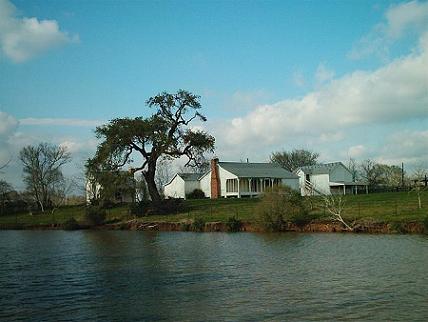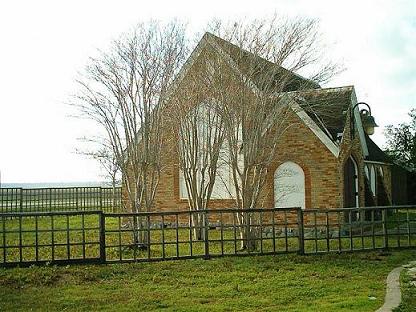Family History: An Interest of Mine

History, particularly that of Texas, is one of my main interests. I am especially fascinated by events and conditions of the 19th century, especially during the United States Jacksonian era and the colonial and republican period in Texas (though I find many other places and times similarly absorbing: the end of czarist rule in Russia, for example). My blog entries on historical subjects, however, also make apparent another closely-related principal concern of mine: Genealogy. To me they are virtually inseparable and I consider them the same thing, yet I'll concede the nit-picky differentiations. Knowing the familial connections of historical figures really deepens one's understanding of people's actions and concerns, and it is enthralling to know the connections of one's own family to people, events, and movements of earlier times. I have been so delighted and amazed by all I have discovered about my own family, about the county in which I live, and my ancestors' doings in this and neighboring counties, as well as elsewhere.
It's hard to really ascribe my interests in history and genealogy to any particular reason or occurrence. Some interests we seem to seize on seemingly on the spur of the moment, yet in reality certain characteristics may predispose us to take them up; it seems even interests have "genealogies." My family has always been close. I am one of five siblings and we were lucky enough to have lived our childhoods in that (to me) magical era of the safe, secure, and prosperous (nifty) fifties and the "interesting-times" of the 1960's. Weekends were invariably spent visiting family or being visited by family. My dad was a true gentleman, noble, kind, and gregarious. To my parents, family came first always. We'd often visit my dad's parents in a little town midway between Houston and Galveston. There were several huge pecan trees that lined the lot upon which my grandparents' old Victorian home sat. My dad and his father and brothers would often go sit beneath these trees to talk (this was the era before window unit a/c's). These "bull sessions" were kid magnates. We young'ns would sit and listen to their stories, learning not just family history but also its greater context. Dad would pick up pecans and peel them for us by (I swear!) cutting them open with his pocket knife (first the ends, then down the sides)---he laid hardwood floors and doing so made his hands really strong. I remember several such times when he put his pocket knife away, he'd take out the coins and talk to us about the dates, how old the coins were, and what family or historical events took place in those years. (So, I became a historian, a genealogist, and a numismatist!)
My mom's family seemed to have "always" been in the Houston area. An adoption obscured part of the family origins on her mother's side, so that one of Granny's lines was mysterious. On her other side we are Cherokee (Tennessee to Hopkins County, Texas and environs, then to Houston). Mom and Granny would tell family stories that included ghost stories. One of Granny's cousins was said to have had psychic powers. He died young, having predicted his own death. Granny would tell the story of Banard's appearance to her sister and how a servant dropped her and ran home after seeing him take something from my grandaunts hand and then hand it back to her. My part-Cherokee, north Texas, great grandmother married my part-Italian great grandfather who was from Houston.
I finally eventually solved the mystery of the "forgotten" branch when my grandmother told me that my great-grandfather's mother was named "Gill or McGill." Through census records, I located Mary Ellen Gill. Further research revealed why that branch was so long a fixture of the Houston area. Mary Ellen's father was William C. Gill. He came to Texas in late 1835 or early 1836 and soon was a part of William S. Fisher's "Velasco Blues" (Company I, Texas Volunteers) who fought at the Battle of San Jacinto, where Texas won decisively it's independence.
Mary Ellen was married three times. Her first husband and their child died of yellow fever. Hubby number two, William Fitzgerald (with whom Mary Ellen had a son, Andrew), was a merchant sailor (he was one of Dick Dowling's Irishmen at the Battle of Sabine Pass). He disappeared at sea and Catholic Mary Ellen married an Italian (Catholic, of course) in (oddly!) a civil ceremony (her first two had been church weddings). After the birth of one son (Joseph George Crispi, Jr.) from that third marriage, hubby number two returned from sea! (Thereafter, William Fitzgerald raised his son Andrew.) Mary Ellen died while my great grandfather, Anthony Joseph "Tony", was an infant. His father, Joe Crispi, a ship's chandler, thus couldn't care for the child and work too, so Joe's sister and her husband, surnamed Ingrando, adopted Tony, and thus our early Texas ancestry was forgotten, not because of the change in surname, but due to Tony's lack of continued association and familiarity with his mother's side of the family.
The rest of the story is amazing to me. How such important stuff was just laid aside and forgotten is so hard for me to understand. William C. Gill was Catholic, and here in Texas, he married Sarah Wade Woodruff whose family also came here from Tennessee. Her father was John Woodruff, a farmer and Baptist preacher (and a "Muldoon Catholic," meaning he was nominally "Catholic" as long as it was a requirement for citizenship and receipt of a headright grant in Mexican Texas)! In the summer of 1832, he fought in the Battle of Velasco, an early armed clash between Mexican soldiers and Texas colonists. Apparently, there was family friction over the issue of religion, because I have found evidence of interaction of John Woodruff after that time with all his children but Sarah. Here is the "kicker." John Woodruff came here to this county (Brazoria) in 1831. His wife Rhody Wade Woodruff died before October of 1835, when John married the widow Smith. Sarah Smith's daughter (from her prior marriage) after independence married a doctor who would stay at the Woodruff's home near Sandy Point on his travels to visit patients. That doctor, named Anson Jones, became involved in politics and became the last president of the Republic of Texas. John Woodruff, after independence, moved his family to the new town of Houston and again set up a boarding house/hotel (as later he also did in Austin, where he gave a lot to Anson and Mary Jones). In Houston Woodruff became president of the Harrisburg (Harris) County Board of Land Commissioners. In hearing the evidence of Sam Houston, for whom he vouched regarding the general's tenure in Texas (stating that he knew Houston in Texas since 1832), Woodruff and the other commissioners had to deny Houston's claim to additional headright lands. Woodruff had also known William Barrett Travis. At a trial at which Travis defended a man accused of cattle theft, Woodruff, who arrived with Ben Fort Smith (uncle of the Terrys of Terry's Texas Rangers) gave the closing prayer, after which, one historian wrote, the event became a prayer meeting.
Yet it was not entirely my dad's, my mom's, or my grandmother's stories that set me off in search of family data. My mom's dad had always stated that he was a cousin of Baseball Hall of Famer Christy Mathewson. Well, I'm still working on that one! Data indicates a definite connection, but the name of my 4xgreat grandfather is yet to be determined, so connecting the two Mathewson lineages has not been possible.
Since at least the third grade (about two gazillion years ago!), I have been obsessed by the history of my home county. Only much later did I realize my family's early and strong roots here. My interest in local history was definitely incited by the legend of "Old Three Hundred" colonist James Britton "Brit" Bailey, who was definitely buried (as his will requested) standing up, and whose ghost is said to come back and roam about Bailey's Prairie in search of the whiskey he allegedly requested be buried with him. (I have researched the history behind the legend, and have made some interesting discoveries not covered by story tellers. For one thing, there were two Brit Bailey's. A nephew by that name accompanied his uncle to Texas. There was a letter stating empresario Stephen F. Austin's decision to have Brit Bailey leave the colony. Perhaps the Brit assumed to have been referred to therein was not the uncle, but the nephew.)
But it was another ghost legend that pretty well confirmed my interest in local history. My family in the early '60's was moving from the county seat to Lake Jackson, a "bedroom community" named after the lake near which it was built. Abner Jackson was a wealthy planter who built a stately mansion on the shores of the lake, and the Jackson sons were typical of the latter-day Southern cavaliers inspired by the novels of Sir Walter Scott. After the War Between the States, during which time Abner died and two of his four sons (all of whom fought in the war) were killed, his son George killed his older brother John at the plantation in a quarrel over the inheritance. George later died of tuberculosis before his case came to trial. A classmate referred to the legend of the Jackson ghost (the legend states that George cut off John's head and threw it into the lake!), and I was immediately hooked on the history behind the folklore (yet another big interest!) of the Jacksons and the place to which I was moving.
Thus, history naturally was my favorite subject in school. It is what my college degree is in and what I became certified to teach (along with English). In high school my twelfth grade English teacher gave us a crash course (accelerated reteaching) in punctuation and that much needed instruction strongly influenced my good grades in college English courses (writing papers on fiction, which I really wasn't as into as I was in history). Thus, in looking for a second (required) teaching area for certification, my advisor and I decided on English. I did ok, I guess, because I was inducted into the international honors society for majors and teachers of English, Sigma Tau Delta. My professor who gave me a teaching reference went so far as to state that she'd prefer that I sought to teach English, which I eventually did teach. However, even before then, I had used my early writing "skills" in writing professionally for numismatic periodicals.
(Illustration: Anson Jones, the last president of the Republic of Texas)



